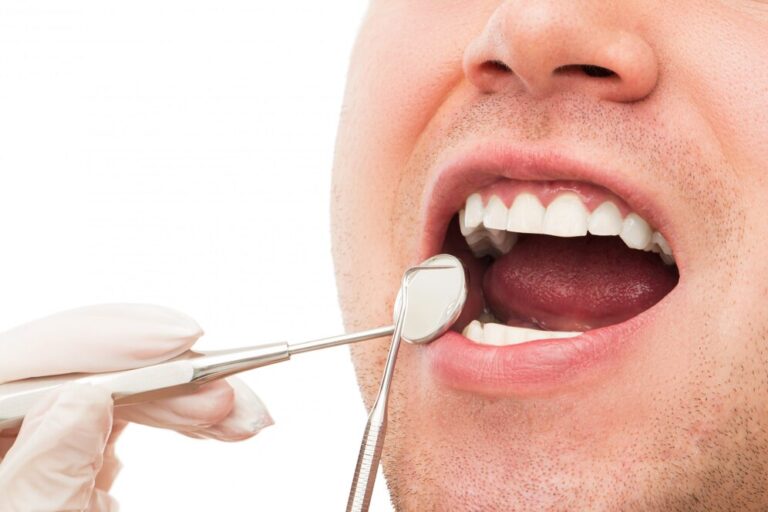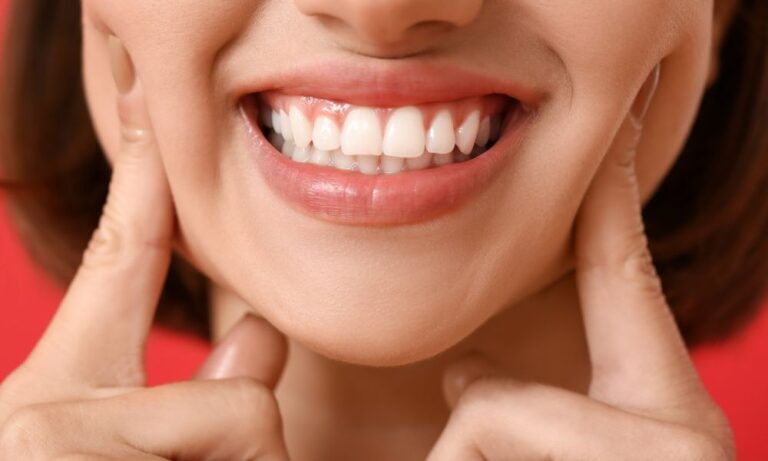Maintaining healthy gums is key to overall oral health. Healthy gums protect our teeth and play a vital role in keeping our mouths free from infections. While regular dental check-ups are essential, there are many things we can do at home to keep our gums in great shape. Simple daily habits can make a big difference in preventing gum disease and other oral problems.
Brushing and flossing properly are the first steps toward healthy gums. These everyday actions remove plaque and food particles that can cause gum irritation and disease. Learning the correct techniques ensures we get the most benefit from our daily oral care routine.
In addition to brushing and flossing, using mouthwash and making changes to our diet can further enhance gum health. Mouthwashes can reach areas that brushing and flossing might miss, while a balanced diet provides the necessary nutrients to keep our gums strong. By incorporating these easy tips into our daily routine, we can enjoy healthier gums and a brighter smile.
How to Maintain Healthy Gums at Home
1. Proper Brushing Techniques
Brushing our teeth seems simple, but doing it correctly ensures our gums stay healthy. First, we should choose a soft-bristled toothbrush. Hard bristles can hurt our gums. Next, using fluoride toothpaste helps fight plaque and tooth decay.
To brush properly, hold the toothbrush at a 45-degree angle to our gums. Use gentle, circular motions rather than harsh back-and-forth strokes. This technique helps remove plaque without damaging our gums. Make sure to brush for at least two minutes, covering all surfaces of our teeth – front, back, and chewing parts.
Don’t forget to brush our tongue too. The tongue can harbor bacteria that affect both our breath and gum health. Finally, replace our toothbrush every three to four months, or sooner if the bristles become frayed. Fresh bristles clean more effectively and help maintain our oral health.
2. Flossing Tips for Healthier Gums
Flossing is just as important as brushing. It removes food and plaque stuck between our teeth, places our toothbrush can’t reach. To floss correctly, use about 18 inches of floss and wrap most of it around your middle fingers, leaving a few inches to work with.
Hold the floss tightly between your thumbs and forefingers and gently slide it up-and-down between each tooth. Curve the floss into a C-shape against the side of the tooth and under the gum line. Move the floss up-and-down a few times before moving to the next tooth. Don’t snap the floss, as it can hurt our gums.
If regular floss is tough to use, consider floss holders or interdental brushes. These tools can make flossing easier, especially for kids or people with limited hand mobility. Consistent daily flossing helps prevent gum disease and keeps our gums healthy.
3. Mouthwash and Rinses: Do They Help?
Using mouthwash can be a helpful addition to our daily oral care routine. Mouthwashes can reach areas that brushing and flossing might miss, helping to remove leftover food particles and reduce bacteria. There are different types of mouthwashes, and each offers unique benefits. Some mouthwashes help fight plaque and gingivitis, while others focus on freshening breath.
When choosing a mouthwash, look for one that contains antibacterial ingredients like chlorhexidine or essential oils. These ingredients can help reduce gum inflammation and kill bacteria that cause gum disease. Alcohol-free mouthwashes are a good option for those with sensitive gums, as they are gentle and won’t cause irritation.
It’s important to follow the instructions on the mouthwash bottle. Typically, swishing the liquid in our mouth for about 30 seconds before spitting it out is enough to get the benefits. Using mouthwash once or twice a day can help keep our mouth clean and our gums healthy.
While mouthwashes shouldn’t replace brushing and flossing, they can be a valuable part of a complete oral care routine.
4. Diet Changes for Better Gum Health
What we eat has a big impact on our gum health. Some foods can help strengthen our gums and keep them healthy. Fresh fruits and vegetables, like apples, carrots, and celery, help clean our teeth and gums as we chew, acting almost like natural toothbrushes. Leafy greens such as spinach and kale are rich in vitamins and minerals that support gum health.
Foods high in vitamin C, like oranges, strawberries, and bell peppers, are especially good for our gums. Vitamin C helps repair and heal gum tissue, preventing gum disease. Dairy products like milk, cheese, and yogurt provide calcium, which is essential for maintaining the bone around our teeth and keeping gums healthy.
Staying hydrated by drinking plenty of water throughout the day is also important. Water helps wash away food particles and bacteria that can harm our gums. Limiting sugary snacks and drinks is key, as sugar feeds the bacteria that cause plaque and gum disease. Making these dietary changes can support better gum health and a brighter smile.
Start Caring for Your Gums Today
Keeping our gums healthy at home is easier than we might think. By focusing on proper brushing and flossing techniques, using mouthwash, and making smart dietary choices, we can protect our gums and enhance our oral health. Simple daily habits and a little extra care go a long way in preventing gum disease and keeping our smiles bright.
At Colorado Gum Care, we understand the importance of maintaining healthy gums. For more tips and professional care, schedule a visit with our periodontists in Northglenn, CO. Our team is dedicated to helping you achieve optimal gum health. Contact us today to get started on your journey to a healthier mouth and a happier smile!







